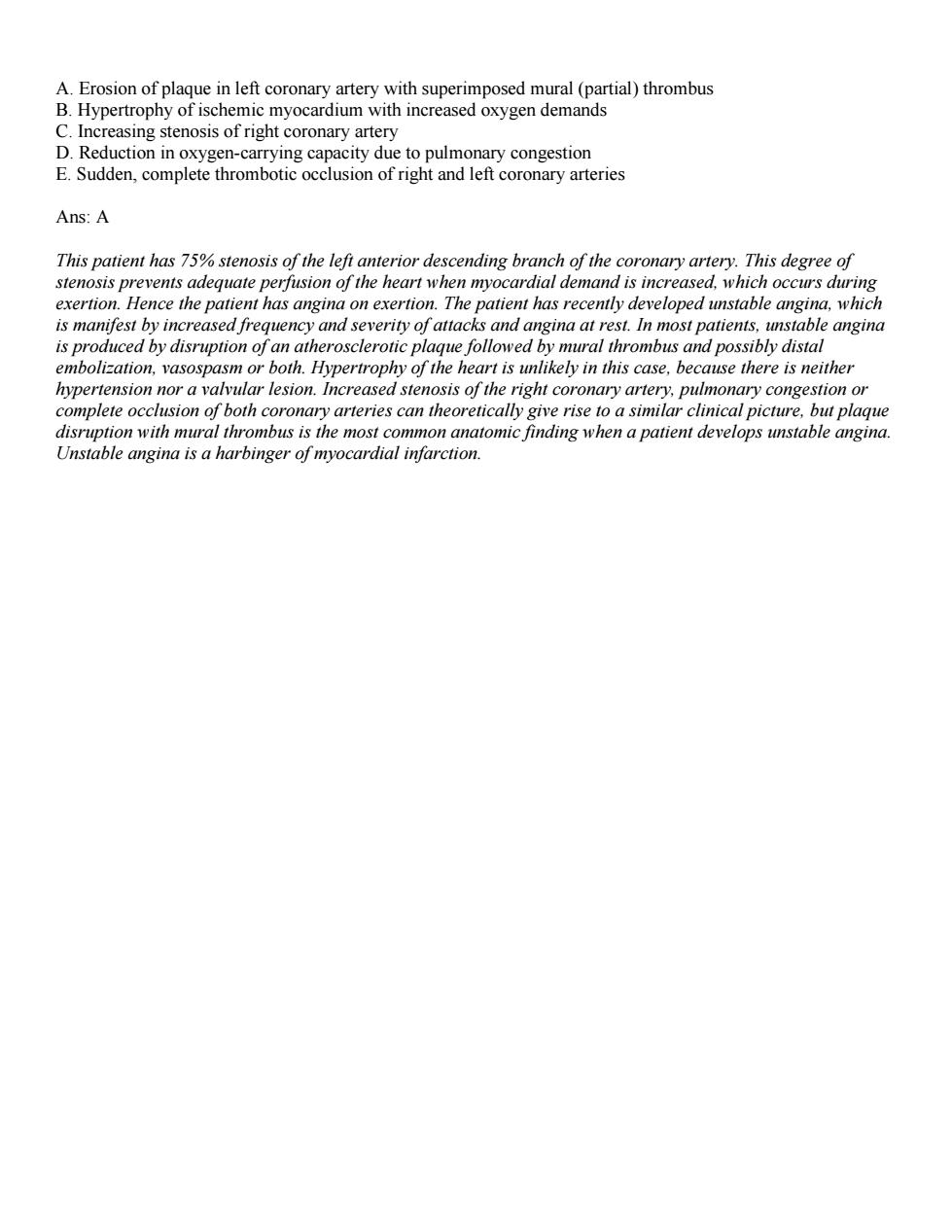正在加载图片...

Hypertrophy of chemc myocardium with inereased(atial)thrombus B.Hypertrophy oxygen deman corona D Re ea ry arte rying capacity du le to pulmonary congestion Ans:A This patient has 75%stenosis of the left anterior descending branch of the coronary artery.This degree of stenosis prevents adequate perfusion of the heart when myocardial demand is increased.which occurs during exertion.Hence the patient has angina on exertion.The patient has recently developed unstable angina,which is manifest by increased frequency and severity of attacks and angina at rest.In most patients,unstable angina is produced by disruption of an atherosclerotic plaque followed by mural thrombus and possibly distal embolization,vasospasm or both.Hypertrophy of the heart is unlikely in this case,because there is neither hypertension nor a valvular lesion.Increased stenosis of the right coronary artery,pulmonary congestion or complete occlusion of both coronary arteries can theoretically give rise to a similar clinical picture,but plaque disruption with mural thrombus is the most common anatomic finding when a patient develops unstable angina. Unstable angina is a harbinger of myocardial infarction. A. Erosion of plaque in left coronary artery with superimposed mural (partial) thrombus B. Hypertrophy of ischemic myocardium with increased oxygen demands C. Increasing stenosis of right coronary artery D. Reduction in oxygen-carrying capacity due to pulmonary congestion E. Sudden, complete thrombotic occlusion of right and left coronary arteries Ans: A This patient has 75% stenosis of the left anterior descending branch of the coronary artery. This degree of stenosis prevents adequate perfusion of the heart when myocardial demand is increased, which occurs during exertion. Hence the patient has angina on exertion. The patient has recently developed unstable angina, which is manifest by increased frequency and severity of attacks and angina at rest. In most patients, unstable angina is produced by disruption of an atherosclerotic plaque followed by mural thrombus and possibly distal embolization, vasospasm or both. Hypertrophy of the heart is unlikely in this case, because there is neither hypertension nor a valvular lesion. Increased stenosis of the right coronary artery, pulmonary congestion or complete occlusion of both coronary arteries can theoretically give rise to a similar clinical picture, but plaque disruption with mural thrombus is the most common anatomic finding when a patient develops unstable angina. Unstable angina is a harbinger of myocardial infarction